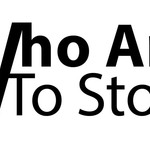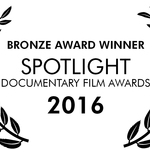Submitted by Helen Dunn and Elma Harder
Do you have a coworker who is sometimes a little moody but adds colour to your otherwise boring workweek? Are you someone who loves hanging out with people, but you often cancel plans last minute? Do you wish your partner would stop buying clothes for you, because the shirts they purchase always feel so scratchy?
Welcome to the world of invisible disabilities. Brain injury, fibromyalgia, anxiety disorders, and autism—just a few of the disabilities that sometimes go with the traits described above. What is an invisible disability? It is something you might not notice until you get to know someone, or something you didn't think was all that different about your personality until someone pointed it out. People tend to have love/hate relationships with invisible disabilities: many people wish they could be healed of chronic pain and impairment, while others might delight in what makes them or their family member unique.
Invisible disabilities are simply one aspect of who someone is. They are also a social construct used to limit or encourage the participation of certain kinds of people in society. Churches are one place where invisible disabilities show up in spades. Maybe you have an anxiety disorder and you enjoy the solitude of Compline over Sunday morning worship, but this isn't something people would necessarily know just by looking at you. Or perhaps you are a Parish Council member who has lots of great ideas, but your fellow Council members have a hard time understanding the sudden bouts of pain that prevent you from completing projects. Whatever the case, churches have historically supported or failed to welcome people with invisible disabilities. Uncovering that history is long overdue in the Anglican Church of Canada.
So what can you do?
On February 10, join filmmaker Cheryl Green for a daylong (10 am – 4 pm) workshop on invisible disabilities. Hosted by Christ Church Cathedral, the workshop will cover issues related to invisible disability and the Christian faith and how these issues intersect with race, gender, and sexuality. Cheryl Green will also show her film, “Who am I to stop it”, an award-winning documentary on isolation, art, and transformation after brain injury.
Registration for the workshop is through the Rev'd Helen Dunn. Sign up by phoning 604-682-3848 ext. 25 or by emailing helen@thecathedral.ca. There is a $10 charge to cover the cost of lunch. An ASL interpreter is available upon request. The film has closed captions and described video. Any other requests for accommodations are encouraged and financial assistance is available for anyone who cannot pay the $10 fee.
Who Am I To Stop It is a fiscally-sponsored project of The Hollywood Theatre and distributed by New Day Films.
IMAGES
- Production still of the three principals from the film
- Film title logo

.jpg)



.jpg)


